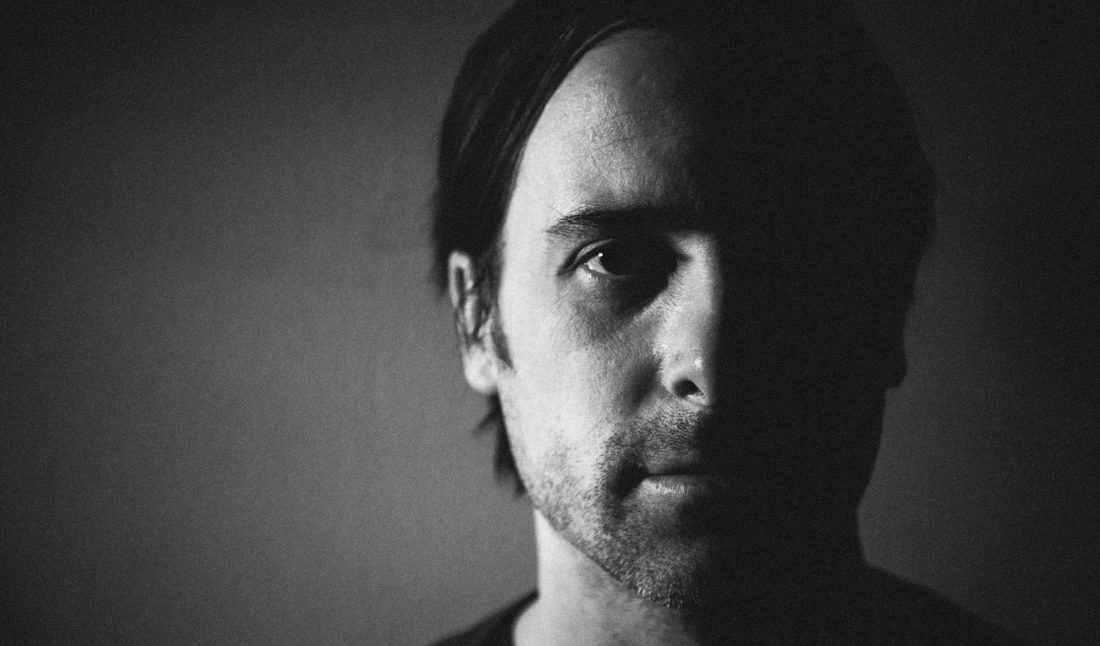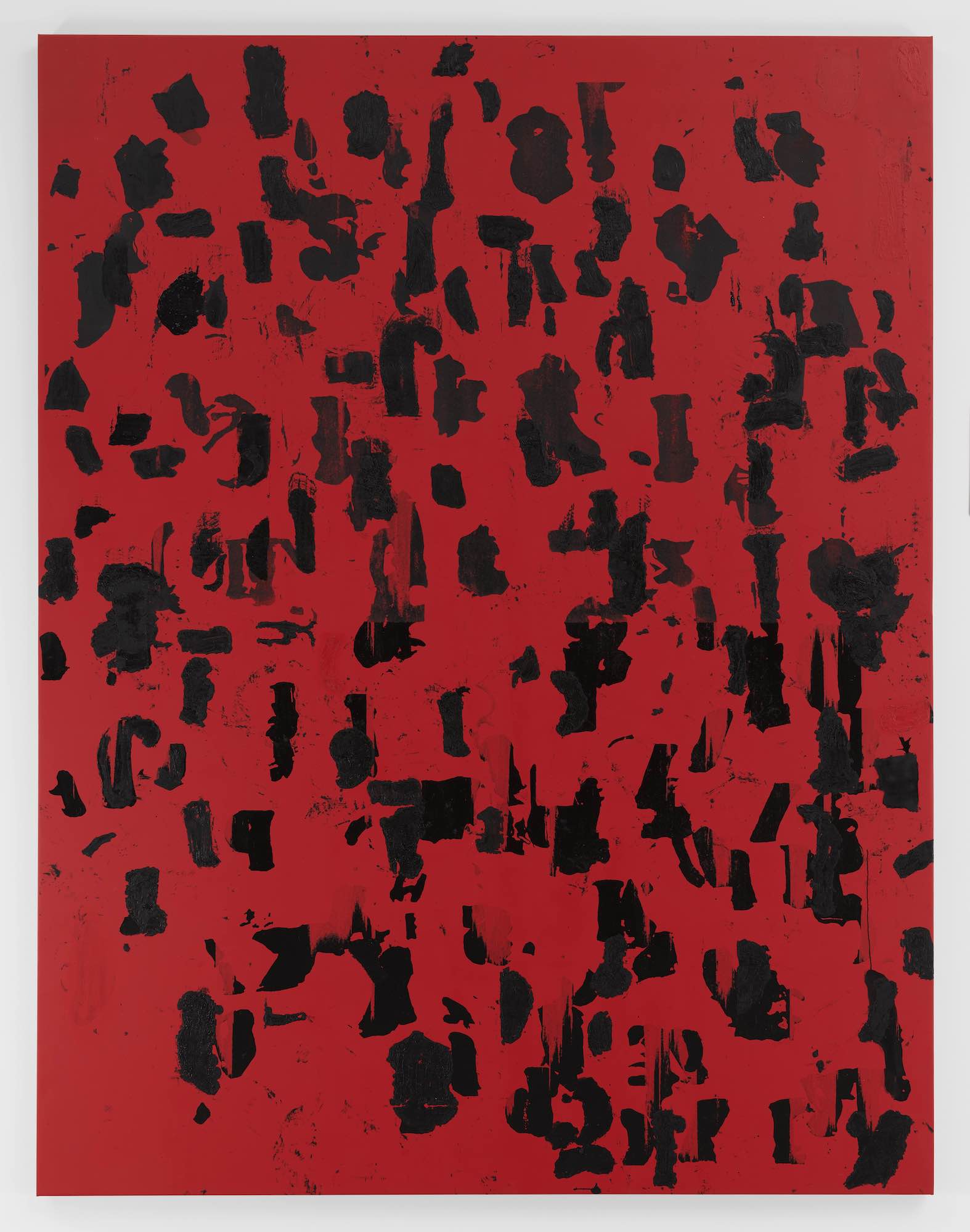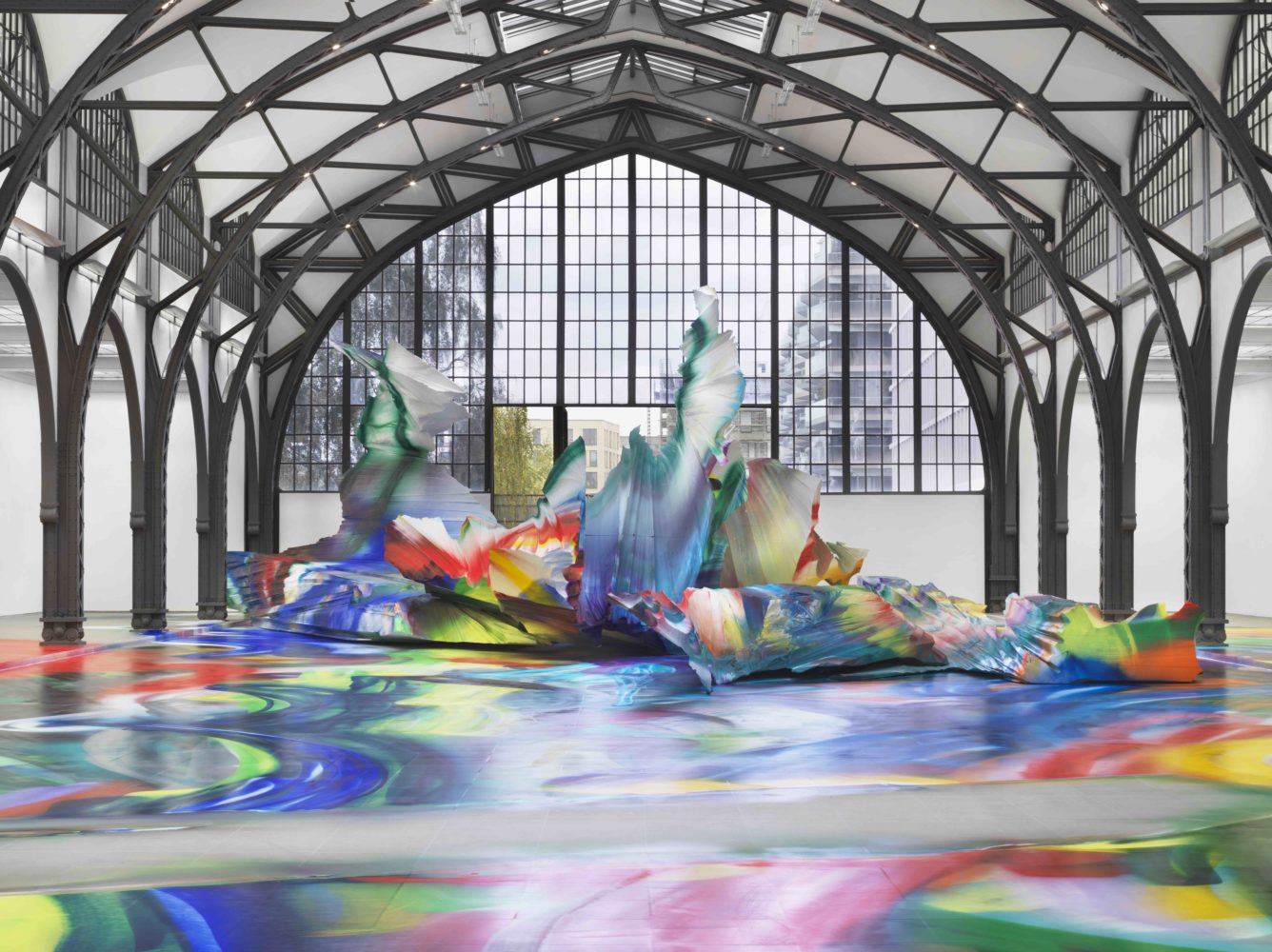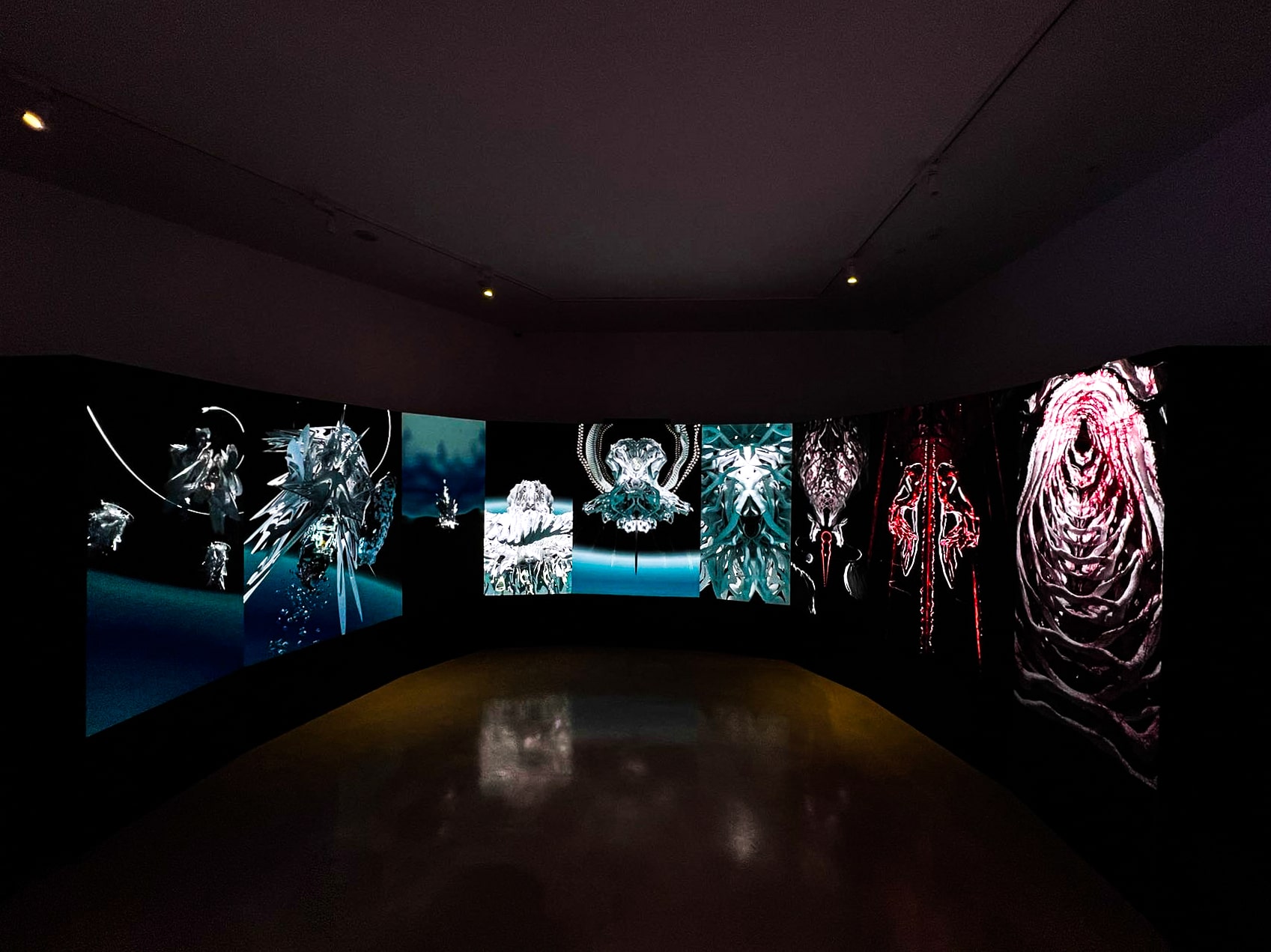The art of Cleon Peterson is the result of his personal experiences. During a traumatic childhood of absent parents and little direction, he spent his adolescent years in Washington between homes, roaming the streets with his brother and learning from troublemakers. He dropped out of high school and moved to California to paint skateboards for cash, but in his early 20s he became a product of his environment, struggling with addiction and incarceration. After his release, he got clean, earned an undergraduate and a master’s degree, and pursued a career in art. He found himself with much to communicate about his ongoing relationships with power, violence, and stigma, and he wanted to paint it with purpose and meaning.
As an ex-convict without an address, it was difficult to find work. Denied jobs at supermarkets, cafés, and retail, he turned to his friend Shepard Fairey, who lent him a space within his studio to work. Eventually, the world started to take note, as Peterson began to present significant shows filled with works that hinge on storytelling to spark deep thought. On canvas, both heroic and menacing figures enact real-life scenarios happening in culture today—from political tension and police brutality to our relationship with technology.
Ahead of moving into a new studio, the Los Angeles–based painter spoke with Whitewall about his latest New York show, “Mr. Sinister” at albertz benda, and how by understanding his own traumas he developed a triumphant career.
WHITEWALL: You have described “Mr. Sinister,” the focus of your recent exhibition at albertz benda in New York, as an exploration of yourself. How so?
CLEON PETERSON: I read this book by George Saunders of short stories and there was one called The Nose by this Russian dude, Nikolai Gogol. It’s an old story about this guy who loses his nose and another guy that finds it, and they go on this adventure. What the reader understands at the end is that the world is full of misunderstandings. Everybody’s doing the best they can, but there’s an innate understanding that creates crisis in everybody.
My original idea was to make a show about morality, because morality is at the basis of what’s going on today. The idea that truth has been lost, objective truth, and with this postmodern pluralism stuff going on. I wanted a moral character and an immoral character in action. The ghostly character is thinking it has a gold idea that allows him to do anything. In that name of morality, it allows you to be immoral.
Then there’s this bureaucrat, big brother guy, who’s bad in society. He controls things and has a godly presence. He’s above us all and will provide security. This is an idea that people long for and end up voting for—like Trump. You go from society, with democracy and a lot of voices deciding what’s right and wrong, to trading in all your values. The back and forth between those characters is also about how money and progress influences things. And what the past actually is, and how you can sum up a story of it that fits into whatever agenda you have today—like idealized history.
WW: So, who is Mr. Sinister? The good guy or the bad guy?
CP: The one character that I didn’t have in there, ubiquitous to our world today, the most important one, is “Mr. Sinister.” Modern man, you and I, have brought with us a cynicism that reflects and influences everything we see. That may be one of the biggest problems that we’re facing today—the breakdown of trust with one another, relation to one another. And the cynical perspective of me going back to my roots, as an outsider to society. When I went through bouts of alcoholism and drug addiction, I trusted nobody. I think we’re going through that now with the media and isolation.
I left Mr. Sinister out because I didn’t realize he, you and I, was a part of the art show. I didn’t realize it until after. When I want to draw a bad guy, I can draw a bad guy, but I can’t draw a good guy because even the good guy seems bad. So, who’s the bad guy? Me.
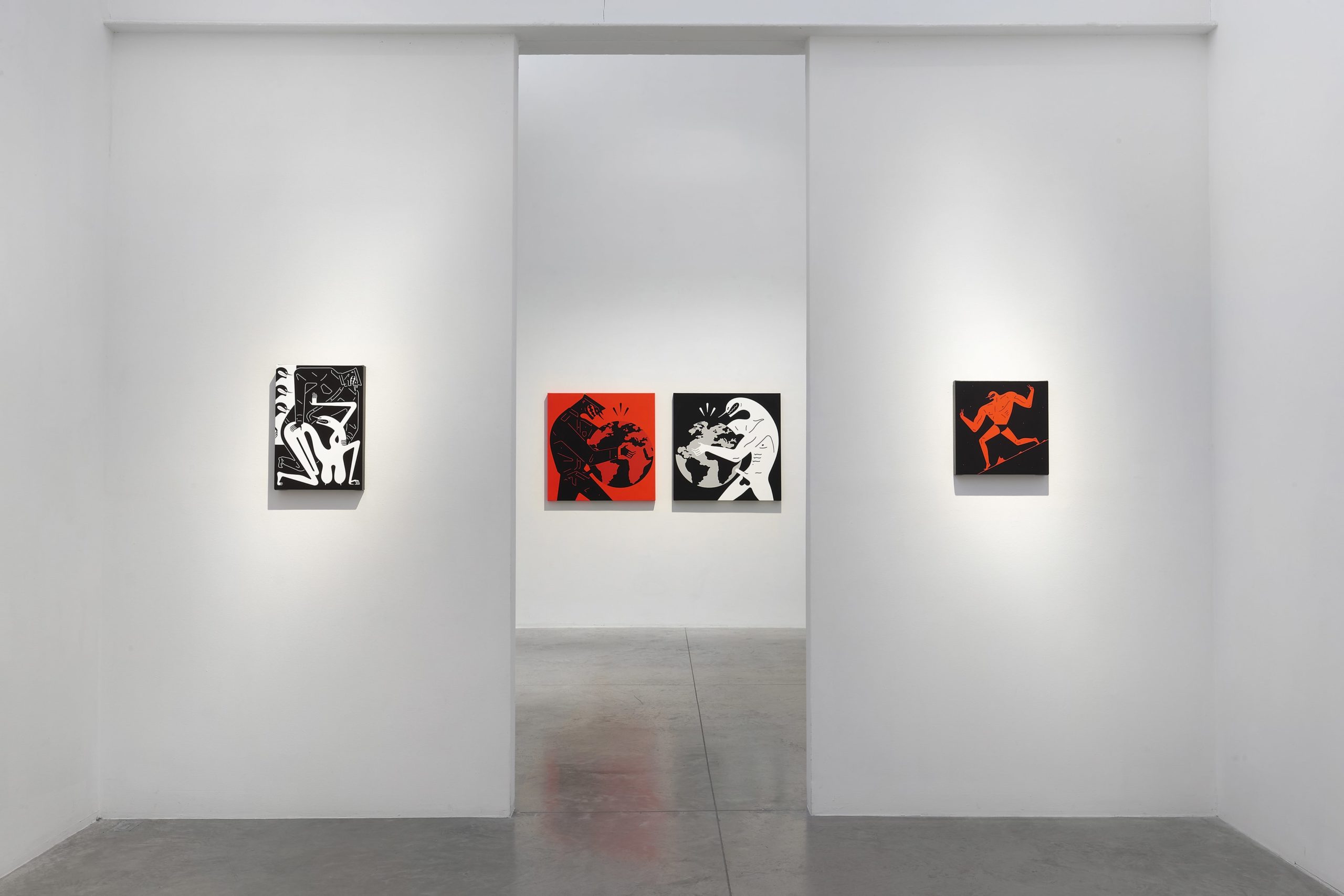
I feel like we’re living a lot of your lives online now, and there’s this quote from a guy I love. It’s a question: If you had the ability to be invisible and undetectable, ask yourself what you would do. If you think about that, most people will say, “I’d rob a bank. I’d be a voyeur and look at something I’m not supposed to.” It’s always bad. You’re not going to be Mother Teresa. If you do good things, you want to be seen, right?
I realized the way that we’re living our lives nowadays through social devices is through that space a little bit. We’re not accountable to one another. I think the tendency for people is to act duplicitously. In the real world, 90 percent of people are following the rules and the other 10 percent aren’t and they get thrown in jail. On social media, I bet it’s the other way around. That’s because there’s no accountability.
WW: You’ve previously spoken about your struggles with trauma and addiction. How did your upbringing impact your current art practice?
CP: I grew up being adrift, but I had this weird responsibility to be an adult as a kid and to parent my parents. It bred this addiction in me because I assumed responsibility for the place I was at in the world, and I turned it into this self-destructive energy. My brother and I parented each other and went into the streets and hustled to get by. That led us to different kinds of encounters with the police, which was always about power. But getting arrested—and the penalty for being a drug addict, which is severe—changed me and stigmatized me and my whole life. Those years of paying the consequences built resentment in me and made me really aware of power.
I say my work is about power, but it comes from being alienated in society—and then being imprisoned and feeling like there was a severe injustice at that point. Now, I tune into what makes me angry, and I try and understand it. It’s what motivates my artmaking.
WW: Before jail, you had gone to art school a few times but dropped out. How did you end up going back to art after being released?
CP: Even though my mom was completely insane, there was a side of her that was super smart. She had good attention to give, too. Initially, when she saw that I was really into art, she gave me attention. But she would do this Joan Banet Ramsey thing where she would try and live through me as a little kid. I was 15 doing art shows and she was promoting me, basically. I turned into her hustle. At that time, she would reward me by buying me a skateboard or something if I made paintings. I was into it initially, but it turned into a bad thing. She would buy these flower arrangements or show me impressionist landscapes, and then I’d make paintings like that. I was painting like a Fauvist these images of flowers.
At the same time, I was drawing underwater battles. It got to a point where I was making her art and they wanted to give me an art show, and I was like, “Nah, I’m not going this anymore.” I quit when I was like 15 and said I wasn’t doing it anymore, especially for my mom.
But making art was the one thing I always loved doing. It was my release. When I was 17, I moved to San Diego and drew skateboards to make money, so I had been down there before, addicted to drugs and working, and met Shepard [Fairey]. When I got out of jail, they sent me to a behavior modification halfway house sort of place. It was very strict. If you fucked up, you went straight tot jail. I did that for two years, and there they said I had to get a job. I went around trying to get a job at Ralph’s supermarket, at café, and every time I turned in my application, no one would call me back because I didn’t really have an address. So, I hit up Shepard. I didn’t really have a job with him, he just offered me a space where I could work out of. And then I kind of freelanced. Looking back, it was super generous.
WW: What drew you to the recognizable aesthetic you have today?
CP: When I was in grad school, I started reading philosophy and understanding my feelings—the resentment I had toward institutional power. I started reading [Michel] Foucault, and in that time, I started drawing characters that were fighting each other. I went into design thinking I could make a living off of that, but I started to feel a void trying to sell garbage to people. That’s when I started painting again—the last project I did after grad school. I made these deviant characters, like police, and people getting beaten in a forest. That was the beginning of trying to understand violence, power, and submission.
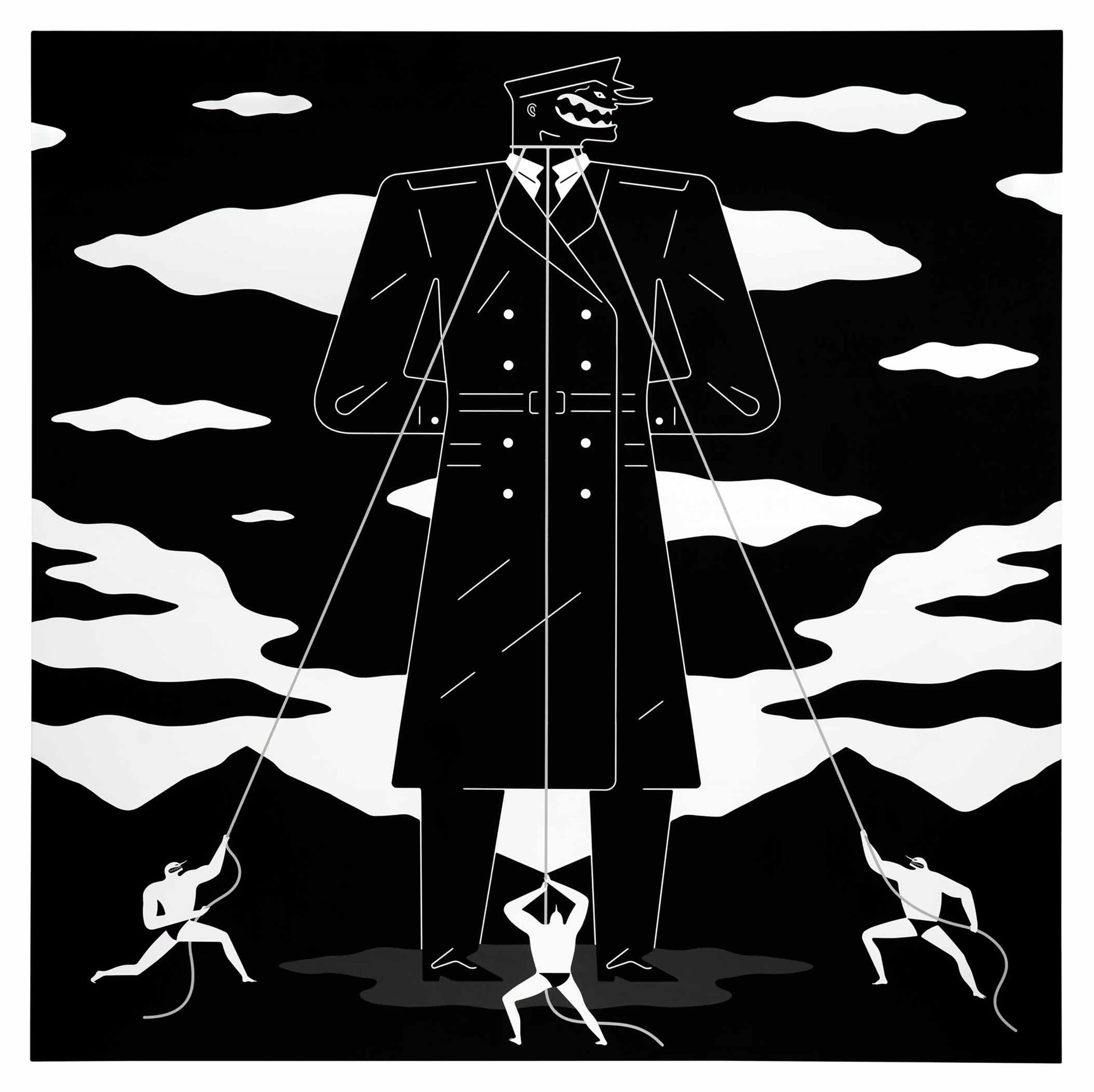 Cleon Peterson, “Yank Crime,” 2022, acrylic on canvas, 72 x 72 inches, photo by Aaron Farley,
courtesy of the artist and albertz benda, New York.
Cleon Peterson, “Yank Crime,” 2022, acrylic on canvas, 72 x 72 inches, photo by Aaron Farley,
courtesy of the artist and albertz benda, New York.
WW: Do you feel like you have a renewed sense of purpose now?
CP: I think that my duty in the world and throughout my life has been to get in tune with my feelings and explore it, and show my truth. When I’m talking about not restraining myself, that would be the thing that I did for years and years as a kid. I always felt like I had something to say but I didn’t think I was qualified to say it. So, my mission in life now is to have a voice.






